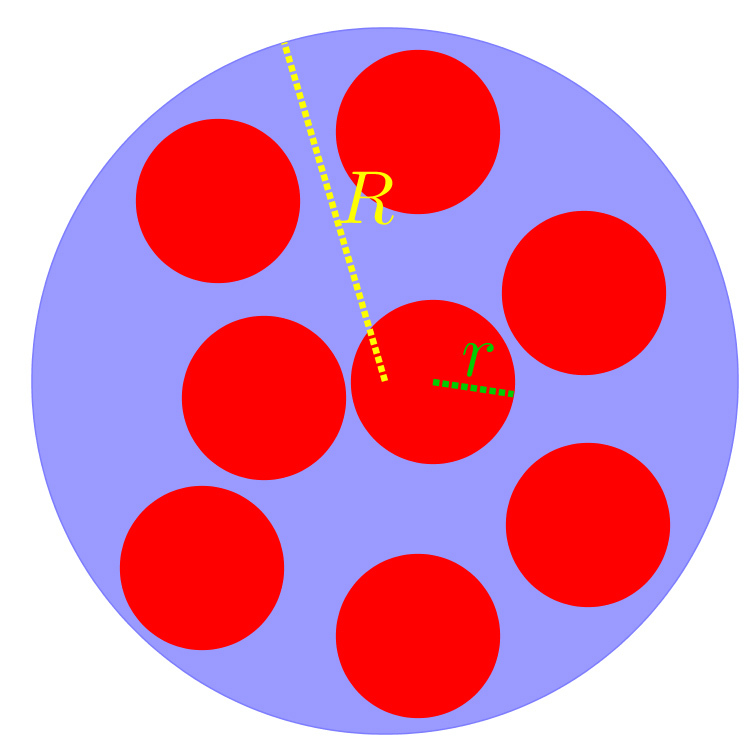Loving circles
In a circle with a radius of we placed number of circles with a radius of , so that
-
No two of them cover each other.
-
Neither of them hangs out of the circle
We know that we can't place one more circle with radius of with the conditions above. Which of the following statement is ture, if
?
A)
B)
C)
D)
E)
F)

This section requires Javascript.
You are seeing this because something didn't load right. We suggest you, (a) try
refreshing the page, (b) enabling javascript if it is disabled on your browser and,
finally, (c)
loading the
non-javascript version of this page
. We're sorry about the hassle.
The sum of the circles' area with radius of r is less than the circle with radius of R : n ∗ π ∗ r 2 < π ∗ R 2 , so n < r R . No we multiply all of the circles' radiuses by two, so these cover the circle with radius of R − r , so π ∗ n ∗ ( 2 r ) 2 > π ∗ ( R − r ) 2 , and from that we get
2 1 ∗ ( r R − 1 ) < n < r R .